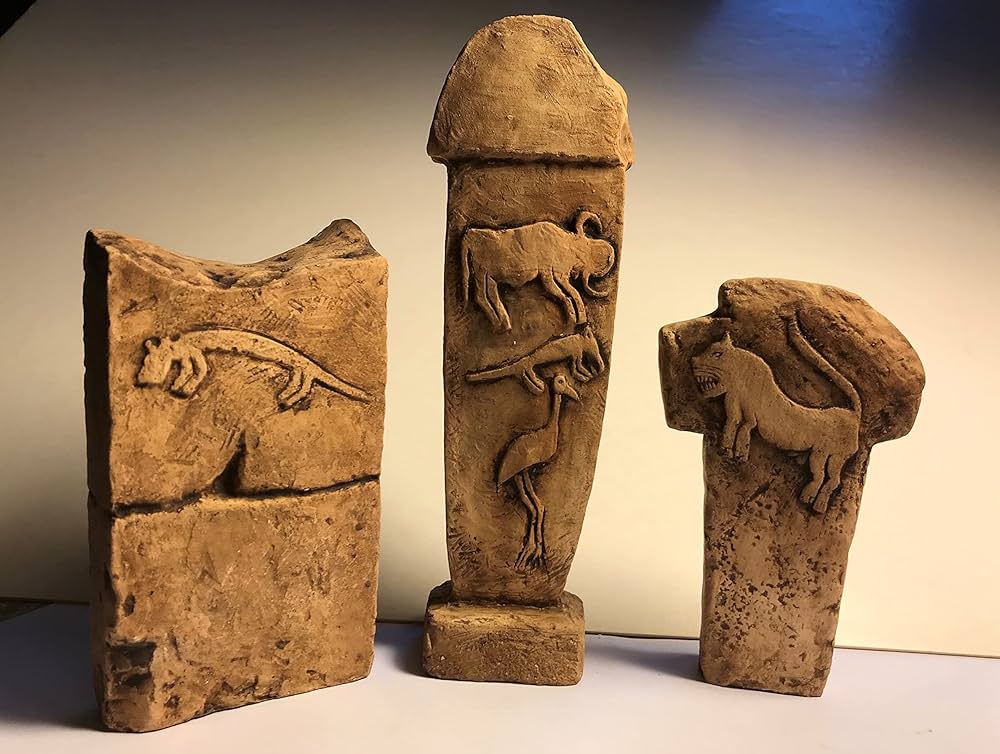Göbeklitepe, located in southeastern Turkey, is one of the most significant archaeological discoveries of the 20th century. Here are more detailed insights into this fascinating site:
### Overview
– **Location:** Near the city of Şanlıurfa, southeastern Turkey.
– **Age:** Approximately 11,000-12,000 years old, dating back to the Pre-Pottery Neolithic period (9600-7000 BCE).
– **Discovery:** Discovered in 1963 by a team from Istanbul and Chicago universities, but its significance wasn’t recognized until the 1990s when Klaus Schmidt of the German Archaeological Institute began excavations.
### Architectural Features
– **Structures:** Göbeklitepe consists of a series of circular and oval-shaped structures, often referred to as “temples.”
– **Pillars:** The site is famous for its massive T-shaped limestone pillars, some weighing up to 20 tons and standing as tall as 5.5 meters (18 feet). These pillars are arranged in circles.
– **Carvings:** The pillars are intricately carved with reliefs of animals such as lions, foxes, snakes, and birds, as well as abstract symbols. Some pillars also feature human-like forms with arms and hands.
### Significance
– **Oldest Known Temple Complex:** Göbeklitepe predates Stonehenge by about 6,000 years and the Great Pyramids by 7,000 years, making it the oldest known example of monumental architecture.
– **Social Organization:** The complexity of the site suggests a high level of social organization, with a workforce capable of quarrying, transporting, and erecting massive stones.
– **Ritualistic Purpose:** While the exact purpose remains debated, Göbeklitepe is believed to have been a ritualistic or ceremonial center, possibly used for religious or communal gatherings.
### Impact on Understanding Prehistory
– **Agriculture and Sedentism:** The site challenges traditional views that agriculture and settled life preceded the construction of large, permanent structures. Göbeklitepe suggests that the desire to gather for religious or social purposes might have been a driving force behind the development of agriculture.
– **Hunter-Gatherer Societies:** It provides evidence that hunter-gatherer societies were capable of complex societal organization and monumental architecture, reshaping our understanding of prehistoric cultures.
### Excavations and Research
– **Ongoing Work:** Excavations are ongoing, and only a small portion of the site has been uncovered. Ground-penetrating radar surveys indicate that there are many more structures yet to be excavated.
– **UNESCO World Heritage Site:** Göbeklitepe was added to the UNESCO World Heritage List in 2018, recognizing its global significance.
### Visitor Experience
– **Museum:** The Şanlıurfa Museum houses many artifacts from Göbeklitepe, providing additional context and information.
– **Tourism:** Göbeklitepe has become a significant tourist destination, with efforts to protect and preserve the site while making it accessible to visitors.
Göbeklitepe continues to be a source of fascination and research, offering profound insights into early human civilization and the development of complex societies.







